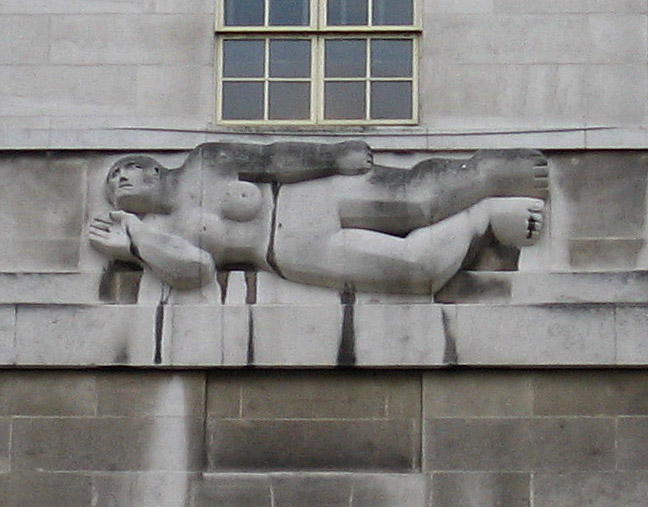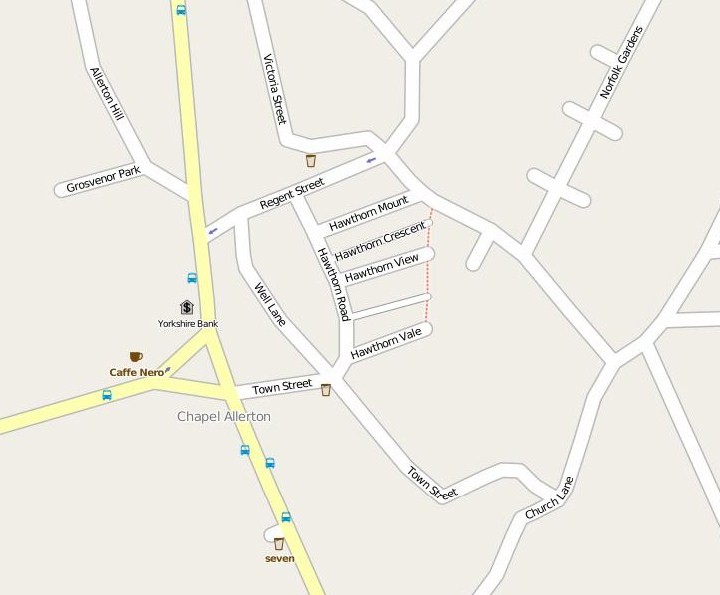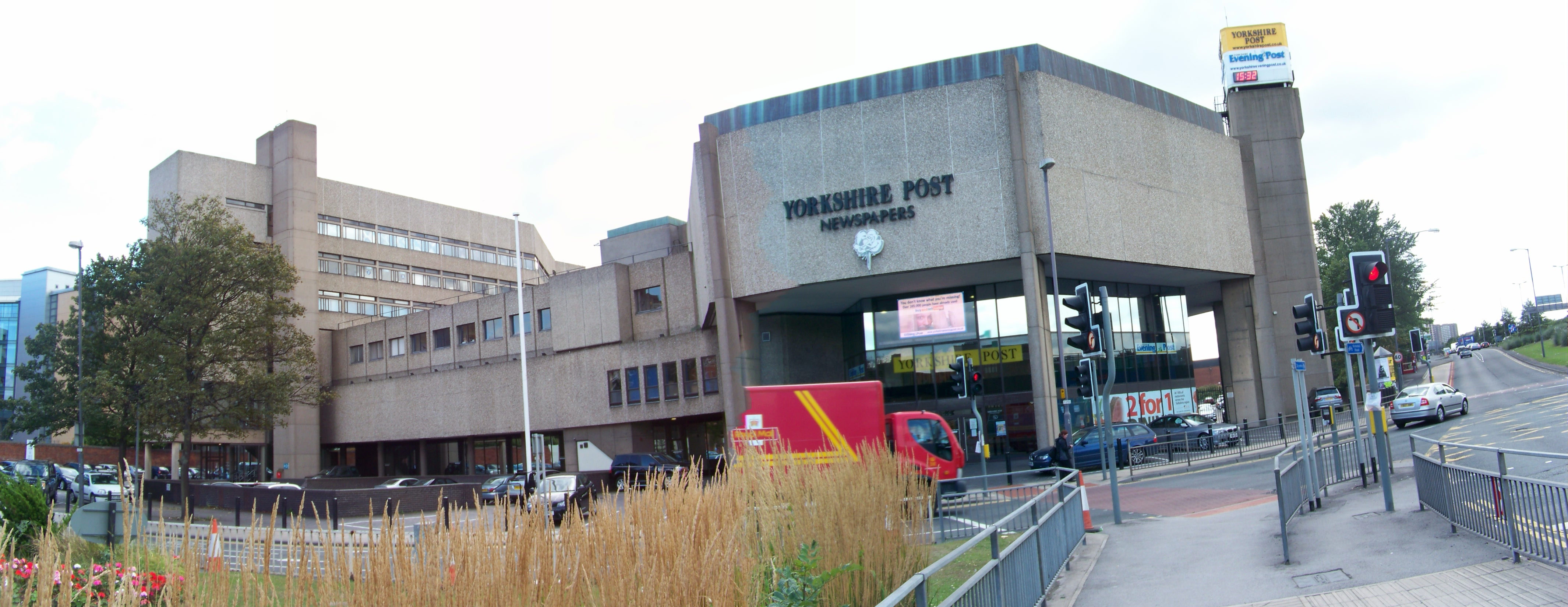|
Terry Friedman
Terence Frederick Friedman (1940-2013) was an American-born art and architectural historian and museum curator. After his death in Leeds, UK, The Sculpture Journal, in their tribute, defined him as ‘a rare being - a scholar curator working in a regional museum, and an outstanding art historian, educator and collector’. He was also a highly acclaimed author and respected as a leading authority on 18th century ecclesiastical architecture. His book, ''The Eighteenth-Century Church in Britain'', the first substantial study of the subject to appear in over half a century, won the William MB Berger Prize for British Art History in 2012. Early life and education Terry Friedman was born in Detroit and raised in a liberal Jewish family. He attended the Temple Beth El synagogue where he was a confirmand in 1955. After graduating from the University of Michigan he moved to London in 1964 to undertake postgraduate studies at the Courtauld Institute of Art. His doctoral thesis on James ... [...More Info...] [...Related Items...] OR: [Wikipedia] [Google] [Baidu] |
Leeds
Leeds () is a city and the administrative centre of the City of Leeds district in West Yorkshire, England. It is built around the River Aire and is in the eastern foothills of the Pennines. It is also the third-largest settlement (by population) in England, after London and Birmingham. The city was a small manorial borough in the 13th century and a market town in the 16th century. It expanded by becoming a major production centre, including of carbonated water where it was invented in the 1760s, and trading centre (mainly with wool) for the 17th and 18th centuries. It was a major mill town during the Industrial Revolution. It was also known for its flax industry, iron foundries, engineering and printing, as well as shopping, with several surviving Victorian era arcades, such as Kirkgate Market. City status was awarded in 1893, a populous urban centre formed in the following century which absorbed surrounding villages and overtook the nearby York population. It is locate ... [...More Info...] [...Related Items...] OR: [Wikipedia] [Google] [Baidu] |
Henry Moore
Henry Spencer Moore (30 July 1898 – 31 August 1986) was an English artist. He is best known for his semi- abstract monumental bronze sculptures which are located around the world as public works of art. As well as sculpture, Moore produced many drawings, including a series depicting Londoners sheltering from the Blitz during the Second World War, along with other graphic works on paper. His forms are usually abstractions of the human figure, typically depicting mother-and-child or reclining figures. Moore's works are usually suggestive of the female body, apart from a phase in the 1950s when he sculpted family groups. His forms are generally pierced or contain hollow spaces. Many interpreters liken the undulating form of his reclining figures to the landscape and hills of his Yorkshire birthplace. Moore became well known through his carved marble and larger-scale abstract cast bronze sculptures, and was instrumental in introducing a particular form of modernism to the Unite ... [...More Info...] [...Related Items...] OR: [Wikipedia] [Google] [Baidu] |
Chapel Allerton
Chapel Allerton is an inner suburb of north-east Leeds, West Yorkshire, England, from the city centre. It sits within the Chapel Allerton ward of Leeds City Council and had a population of 18,206 and 23,536 at the 2001 and 2011 census respectively. The area was also listed in the 2018 ''Sunday Times'' report on Best Places to Live in northern England. Location The region within the Chapel Allerton ward generally considered to be Chapel Allerton is bounded by Potternewton Lane to the south, Scott Hall Road to the west and Gledhow Valley Road to the north-east. Surrounding districts include Moortown, Meanwood, Roundhay, Gledhow, Chapeltown and Harehills. Chapel Allerton is on Harrogate Road, which, before the building of the A61 Scott Hall Road, was the main road from Leeds to Harrogate. The centre in terms of activity is Stainbeck Corner, at the junction of Stainbeck Lane, Harrogate Road and Town Street, which is also the key place on 19th century maps of the village. Na ... [...More Info...] [...Related Items...] OR: [Wikipedia] [Google] [Baidu] |
Public Monuments And Sculpture Association
The Public Monuments and Sculpture Association (PMSA) was an organisation established in 1991 to bring together individuals and organisations with an interest in British public sculptures and monuments, their production, preservation and history. It was wound up in the summer of 2020, although members dissatisfied with this decision established a successor organisation with similar objectives, the Public Statues and Sculpture Association, in the autumn of the same year. Status and governance The association was a charitable company which was run by a board comprising its Director and the Trustees, known as the General Committee. Ad hoc sub-committees organised events, projects or campaigns. The President of the PMSA was the Duke of Gloucester and the chairman was Sir John Lewis. It was based at 70 Cowcross Street, London. Activities The primary aim of the PMSA was to heighten public awareness of Britain's monumental heritage—past, present, and future—through activities, pub ... [...More Info...] [...Related Items...] OR: [Wikipedia] [Google] [Baidu] |
The Yorkshire Post
''The Yorkshire Post'' is a daily broadsheet newspaper, published in Leeds in Yorkshire, England. It primarily covers stories from Yorkshire although its masthead carries the slogan "Yorkshire's National Newspaper". It was previously owned by Johnston Press and is now owned by JPIMedia. Founded in 1754, it is one of the oldest newspapers in the country. Editions are available throughout the United Kingdom with offices across Yorkshire in Harrogate, Hull, Scarborough, Sheffield and York, as well as correspondents in Westminster and the City of London. The current editor is James Mitchinson. It considers itself "one of Britain's most trusted and historic newsbrands." History The paper was founded in 1754, as the ''Leeds Intelligencer'', making it one of Britain's first daily newspapers. The ''Leeds Intelligencer'' was a weekly newspaper until it was purchased by a group of Conservatives in 1865 who then published daily under the current name. The first issue of ''The Yorkshi ... [...More Info...] [...Related Items...] OR: [Wikipedia] [Google] [Baidu] |
Loiner
Loiner is a demonym, describing the citizens of Leeds. The Rugby league club Leeds Rhinos were previously nicknamed the ''Loiners''. History While there are several theories, the actual origin of the term remains uncertain. The three competing theories are: * Loiner could derive from the name Loidis (in use by the eighth century for the district around modern-day Leeds). * Another explanation says that in the 19th century there were many yards and closes around Briggate whose back entrances were known as Low Ins or Loins, hence Loiner. * A third theory is that, in the area of Briggate, locals referred to numerous nearby streets as 'loins’, as a Leeds cognate for the Standard English word 'lanes'. People who gathered in these loins to gossip were therefore termed Loiners. Dialect The term ''Leeds Loiner'' was included by Joseph Wright, a native of nearby Windhill and Wrose, in the ''English Dialect Dictionary English usually refers to: * English language * English people ... [...More Info...] [...Related Items...] OR: [Wikipedia] [Google] [Baidu] |
Benedict Read
Benedict William Read, BA, FSA (26 March 1945 – 20 October 2016) was an English art historian. Usually known as Ben Read, he was the author of numerous books, essays and articles on nineteenth and twentieth century art history, and was one of the most authoritative writers in the second half of the twentieth century on British Victorian sculpture. Early life Read was born in Seer Green, Beaconsfield, Buckinghamshire, but grew up in the village of Stonegrave, North Yorkshire. He was the son of art critic and poet Sir Herbert Read and the viola player Margaret Ludwig, the younger brother of the writer Piers Paul Read and younger half-brother of BBC documentary maker John Read. Through his parents he grew up surrounded by people from the art world like Barbara Hepworth, Henry Moore and Peggy Guggenheim and in later life enjoyed recounting anecdotes of life in the Read household. He went to Ampleforth College, a Roman Catholic boarding school run by Benedictine monks. Academ ... [...More Info...] [...Related Items...] OR: [Wikipedia] [Google] [Baidu] |
Herbert Read
Sir Herbert Edward Read, (; 4 December 1893 – 12 June 1968) was an English art historian, poet, literary critic and philosopher, best known for numerous books on art, which included influential volumes on the role of art in education. Read was co-founder of the Institute of Contemporary Arts. As well as being a prominent English anarchist, he was one of the earliest English writers to take notice of existentialism. He was co-editor with Michael Fordham of the British edition in English of '' The Collected Works of C. G. Jung''. Early life The eldest of four children of tenant farmer Herbert Edward Read (1868-1903), and his wife Eliza Strickland, Read was born at Muscoates Grange, near Nunnington, about four miles south of Kirkbymoorside in the North Riding of Yorkshire. George Woodcock, in ''Herbert Read- The Stream and the Source'' (1972), wrote: "rural memories are long... nearly sixty years after Read's father... had died and the family had left Muscoates, I heard it ... [...More Info...] [...Related Items...] OR: [Wikipedia] [Google] [Baidu] |
Evelyn Silber
Evelyn Ann Silber (born 22 May 1949) is an English art historian and an acknowledged specialist on 20th century British sculpture. She is an honorary Professorial Research Fellow at the University of Glasgow and is researching the marketing of modernist art in early 20th century London and the role played by dealers. Having moved to Glasgow in 2001 to assume the role of Director of the Hunterian Museum and Art Gallery, Silber continues to be based there and is an advocate for Glasgow’s cultural heritage, the conservation of the city, and its tourist industry. She is currently the Chair of the Scottish Archaeological Finds Allocation Panel. Early life and education Born in England in 1949 to Martin Helmut Silber and Mavis Evelyn (née Giles), Silber was educated at Hatfield Girls’ Grammar School before going up to New Hall, Cambridge to read for a degree. She went onto obtain an MA in the History of Art from the University of Pennsylvania following which, she studied for her P ... [...More Info...] [...Related Items...] OR: [Wikipedia] [Google] [Baidu] |
Nicholas Serota
Sir Nicholas Andrew Serota, (born 27 April 1946) is an English art historian and curator, who served as the Director of the Tate from 1988 to 2017. He is currently Chair of Arts Council England, a role which he has held since February 2017. Serota was previously Director of The Museum of Modern Art, Oxford, and Director of the Whitechapel Gallery, London, before becoming Director of the Tate in 1988. He was also Chairman of the Turner Prize jury until 2007. Early life Nicholas Serota was born and raised in Hampstead, North London, the only son of Stanley Serota and Beatrice Katz Serota. His father was a civil engineer and his mother a civil servant, later a life peer and Labour Minister for Health in Harold Wilson's government and local government ombudsman. He has a younger sister, Judith. Serota was educated at Haberdashers' Aske's School (where he was appointed School Captain) and then read Economics at Christ's College, Cambridge (University of Cambridge), before switch ... [...More Info...] [...Related Items...] OR: [Wikipedia] [Google] [Baidu] |
Whitechapel Gallery
The Whitechapel Gallery is a public art gallery in Whitechapel on the north side of Whitechapel High Street, in the London Borough of Tower Hamlets. The original building, designed by Charles Harrison Townsend, opened in 1901 as one of the first publicly funded galleries for temporary exhibitions in London. The building is a notable example of the British Modern Style. In 2009 the gallery approximately doubled in size by incorporating the adjacent former Passmore Edwards library building. It exhibits the work of contemporary artists and organizes retrospective exhibitions and other art shows. History The gallery exhibited Pablo Picasso's ''Guernica'' in 1938 as part of a touring exhibition organised by Roland Penrose to protest against the Spanish Civil War. The gallery played a major role the history of post-war British art by promoting the work of emerging artists. Several significant exhibitions were held at the Whitechapel Gallery including '' This is Tomorrow'' in 1956, t ... [...More Info...] [...Related Items...] OR: [Wikipedia] [Google] [Baidu] |
Jacob Epstein
Sir Jacob Epstein (10 November 1880 – 21 August 1959) was an American-British sculptor who helped pioneer modern sculpture. He was born in the United States, and moved to Europe in 1902, becoming a British subject in 1911. He often produced controversial works which challenged ideas on what was appropriate subject matter for public artworks. He also made paintings and drawings, and often exhibited his work. Early life and education Epstein's parents, Max and Mary Epstein, were Polish Jewish refugees, living on New York's Lower East Side. His family was middle-class, and he was the third of five children. His interest in drawing came from long periods of illness; as a child he suffered from pleurisy. He studied art in his native New York as a teenager, sketching the city, and joined the Art Students League of New York in 1900. For his livelihood, he worked in a bronze foundry by day, studying drawing and sculptural modelling at night. Epstein's first major commission was ... [...More Info...] [...Related Items...] OR: [Wikipedia] [Google] [Baidu] |
.jpg)




.jpg)


